Table of Contents[Hide][Show]
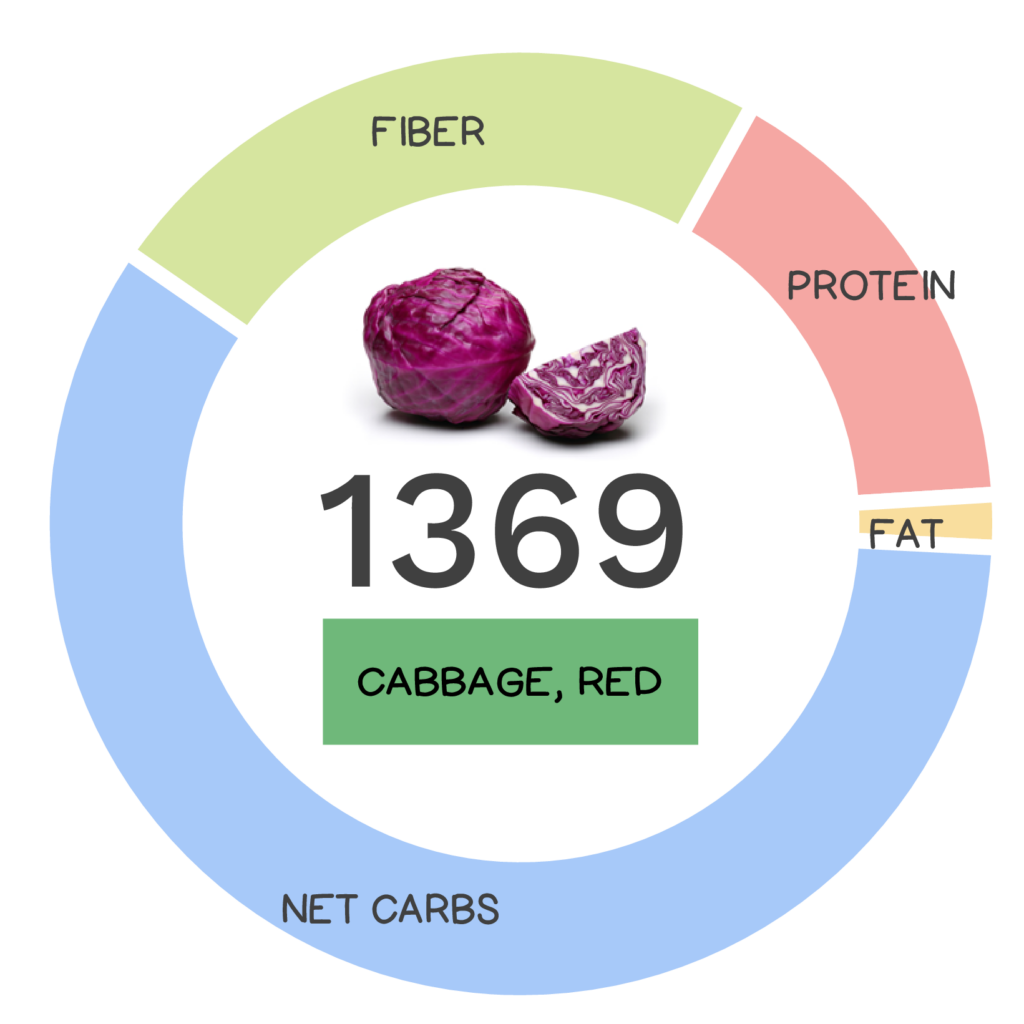
While it may look similar to lettuce, cabbage is actually a member of the same Brassica genus as broccoli, cauliflower, and Brussels sprouts. In fact, it is quite literally the “head” of the family! (Hyuck, see what I did there?) Not only does it grow as heads, but the word cabbage comes from the Latin word for head, “caput”! All members of the family descended from wild cabbage originally found along the limestone cliffs of western Europe. The original species evolved over thousands of years into cultivars with different characteristics enjoyed as common veggies today. For instance, cultivars with large heads became cabbage, large leaves for kale, thick stems with flower buds for broccoli and roots for turnips! Cabbage is one of the oldest cultivated vegetables in Europe and was most likely domesticated before 1000 BC. Historically, cabbage was used medicinally by the Ancient Greeks, Romans, Egyptians, and Europeans and by the Middle Ages it had become a prominent part of the European diet. Cabbage was a staple on sea voyages because it was easy to preserve as sauerkraut and it helped prevent scurvy during long voyages. In fact, Jacques Cartier originally brought cabbage to the Americas in the 1500s and by the 18th century it was commonly consumed by both colonists and native American Indians.
Cabbage is the head of the cruciferous vegetable family, which includes broccoli, cauliflower, and Brussels sprouts to name a few — all members of this family originally descended from wild cabbage.
Today at least 400 different varieties are grown throughout the world (though the most familiar to us are the green, red, and savoy cabbages). Cabbage features prominently in many cultural cuisines and consumption of cabbage varies widely geographically. Currently, Russia has the highest consumption of cabbage out of any country—44 pounds per person per year! In the US, Americans consume closer to 6.5 pounds per year. That’s it? Let’s work on bumping that up – this timeless veggie has so much to offer!
Red cabbage gets its vibrant color from high levels of anthocyanin polyphenols, which are potent antioxidants.
Red cabbage (also called “purple cabbage”) gets its name because of its bright, deep red, or violet color (no surprise there). This vibrant color is thanks to high levels of anthocyanin polyphenols, which are potent antioxidants with diverse health benefits.
Learn What Foods to *ADD* to Your Diet
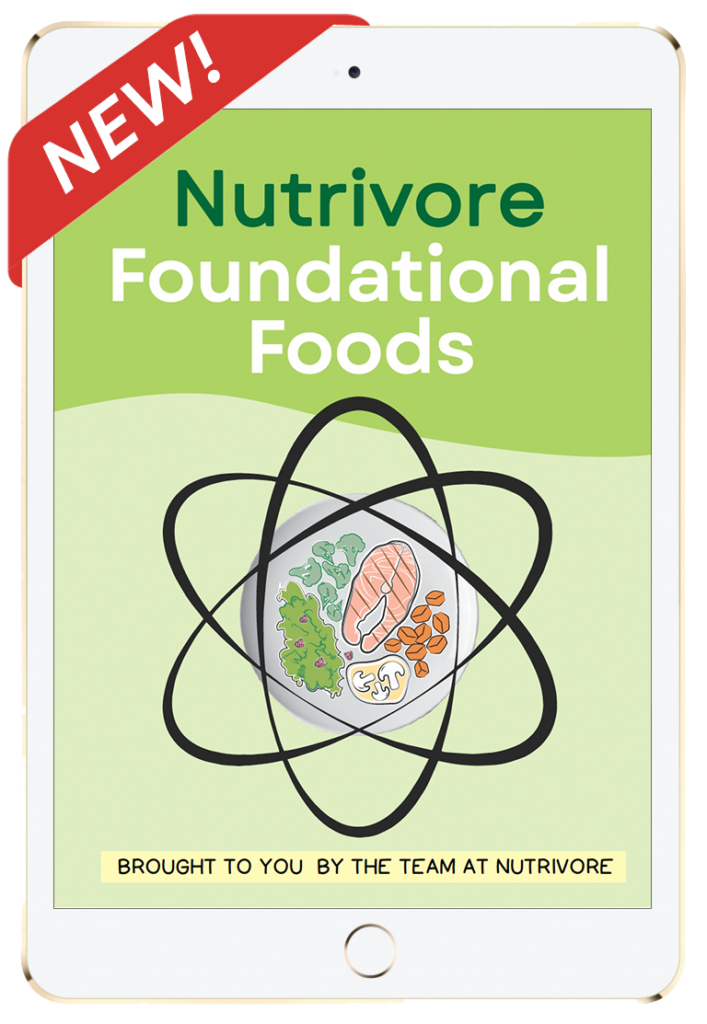
Nutrivore Foundational Foods
Learn what makes the 12 Nutrivore foundational food families nutritionally unique, their health benefits, which options are the most nutrient dense, how much of them to eat, plus various fun facts, practical pointers, and busting of common myths.
This very helpful resource will introduce you to new foods and expand your nutrition knowledge, making food choices easier!
Buy now for instant digital access.
Nutrivore Score for Red Cabbage – 1369
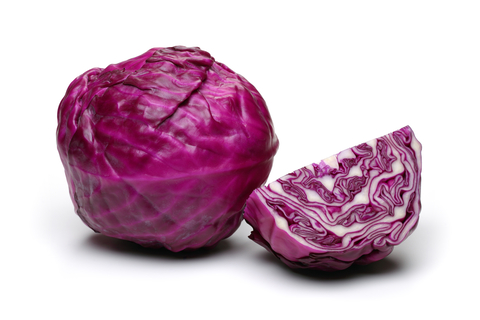
Red cabbage has a Nutrivore Score of 1369, making it a super nutrient-dense food! Plus, it is a low-carb and low-calorie-density food; the calorie count of red cabbage is just 28 calories per cup!
Per serving, red cabbage is a best source (>50% daily value) of glucosinolates, polyphenols, and vitamin C; an excellent source (20-50% daily value) of vitamin K; and a good source (10-20% daily value) of carotenoids and vitamin B6 (pyridoxine).
Ditch Diets. Embrace Nutrients. Start with this FREE Guide.
Sign up for the free Nutrivore Newsletter, your weekly, science-backed guide to improving health through nutrient-rich foods — without dieting harder —and get the Beginner’s Guide to Nutrivore delivered straight to your inbox!

Red Cabbage Nutrition Facts
One serving of red cabbage is standardized to 1 cup, chopped or about 89 grams (3.1 ounces). For reference, one medium head of red cabbage (5″ diameter) is approximately 839 grams (~9 servings), while a typical leaf weighs 23 grams which means: one serving of red cabbage is roughly equivalent to 4 leaves of red cabbage. When you cook red cabbage, it reduces in volume: 1 cup of raw red cabbage is roughly equivalent to 1/2 cup of boiled red cabbage.
Red Cabbage Nutrition Facts Per Serving
| Red cabbage, raw | Nutrivore Score: 1369 | Nutrient Density: Super! |
|---|---|---|
| Serving Size: 1 cup, chopped (89 grams) | Protein: 1.3 grams | Net Carbohydrates: 4.7 grams |
| Calories: 28 | Total Fat: 0.1 grams | Dietary Fiber: 1.9 grams |
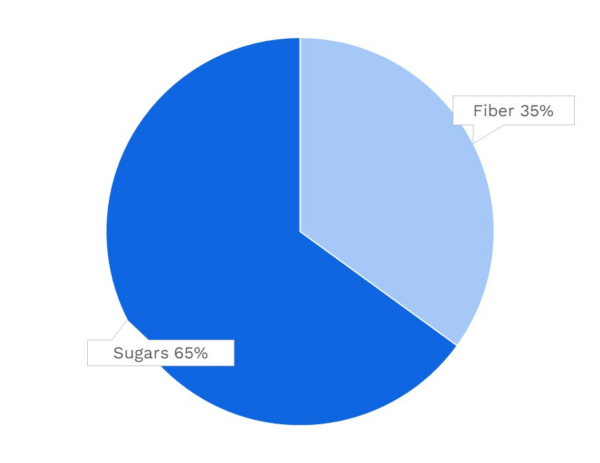
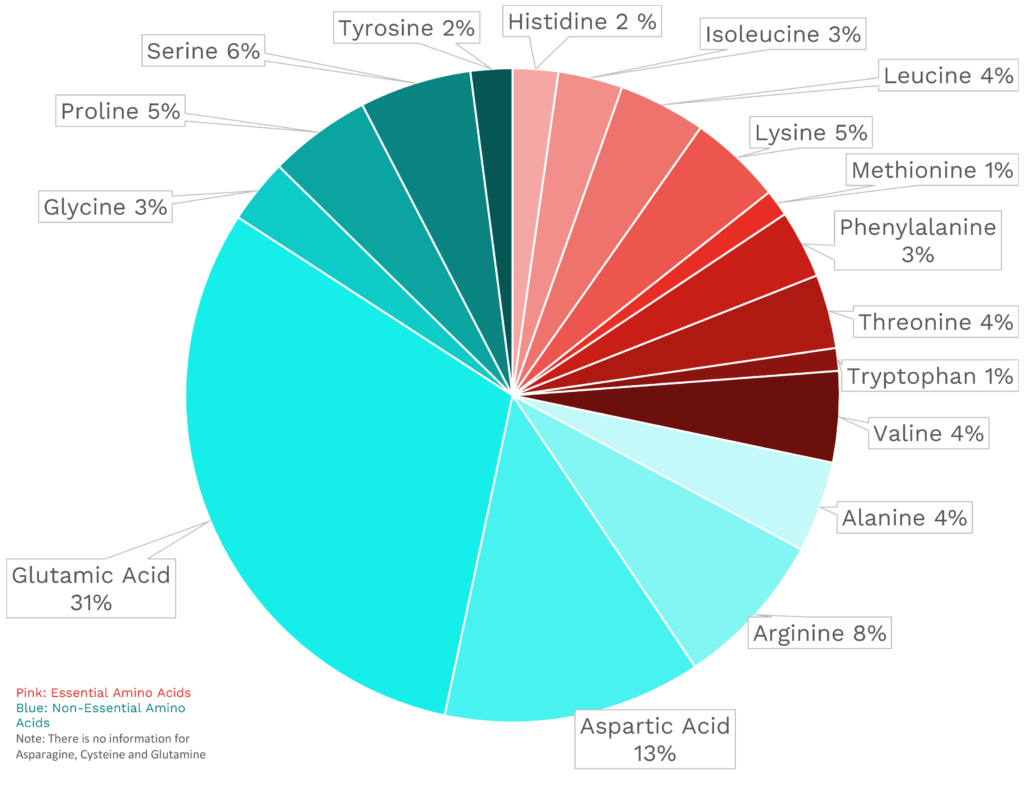
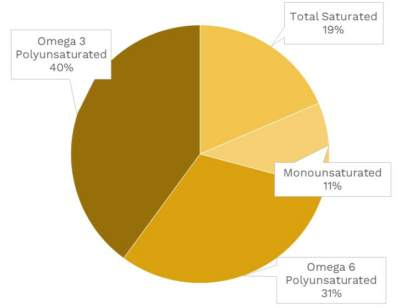
| VITAMINS | ||
|---|---|---|
| Vitamin A | 49.8 μg RAE | 6% DV |
| Vitamin B1 (Thiamin) | 57.0 μg | 5% DV |
| Vitamin B2 (Riboflavin) | 61.4 μg | 5% DV |
| Vitamin B3 (Niacin) | 0.4 mg | 2% DV |
| Vitamin B5 (Pantothenic Acid) | 0.1 mg | 3% DV |
| Vitamin B6 (Pyridoxine) | 186.0 μg | 11% DV |
| Vitamin B7 (Biotin) | 1.5 μg | 5% DV |
| Vitamin B9 (Folate) | 16.0 μg | 4% DV |
| Vitamin B12 (Cobalamin) | 0.0 μg | 0% DV |
| Vitamin C | 50.7 mg | 56% DV |
| Vitamin D (D2 + D3) | 0.0 μg | 0% DV |
| Vitamin E | 0.1 mg | 1% DV |
| Vitamin K | 34.0 μg | 28% DV |
| Choline | 15.2 mg | 3% DV |
| Myo-Inositol | 8.0 mg | ~ |
| CoQ10 | 0.3 mg | ~ |
| FUNCTIONAL FATS | ||
|---|---|---|
| MUFA | 0.0 g | 0% DV |
| ALA | 40.1 mg | 3% DV |
| EPA + DHA | 0.0 mg | 0% DV |
| CLA | ~ | ~ |
| Linoleic Acid | 0.0 g | 0% DV |
| MCT’s | 0.0 g | ~ |
| MINERALS | ||
|---|---|---|
| Calcium | 40.1 mg | 3% DV |
| Copper | 15.1 μg | 2% DV |
| Iodine | ~ | ~ |
| Iron | 0.7 mg | 4% DV |
| Magnesium | 14.2 mg | 3% DV |
| Manganese | 216.3 μg | 9% DV |
| Phosphorus | 26.7 mg | 2% DV |
| Potassium | 216.3 mg | 5% DV |
| Selenium | 0.5 μg | 1% DV |
| Sodium | 24.0 mg | 1% DV |
| Zinc | 0.2 mg | 2% DV |
| PHYTONUTRIENTS | ||
|---|---|---|
| Carotenoids | 906.9 μg | ~ |
| Polyphenols | 604.3 mg | ~ |
| Phytosterols | 13.2 mg | ~ |
| Glucosinolates | 72.1 mg | ~ |
| Thiosulfinates | ~ | ~ |
| Betalains | ~ | ~ |
| AMINO ACIDS & PEPTIDES | ||
|---|---|---|
| Taurine | ~ | ~ |
| Ergothioneine | ~ | ~ |
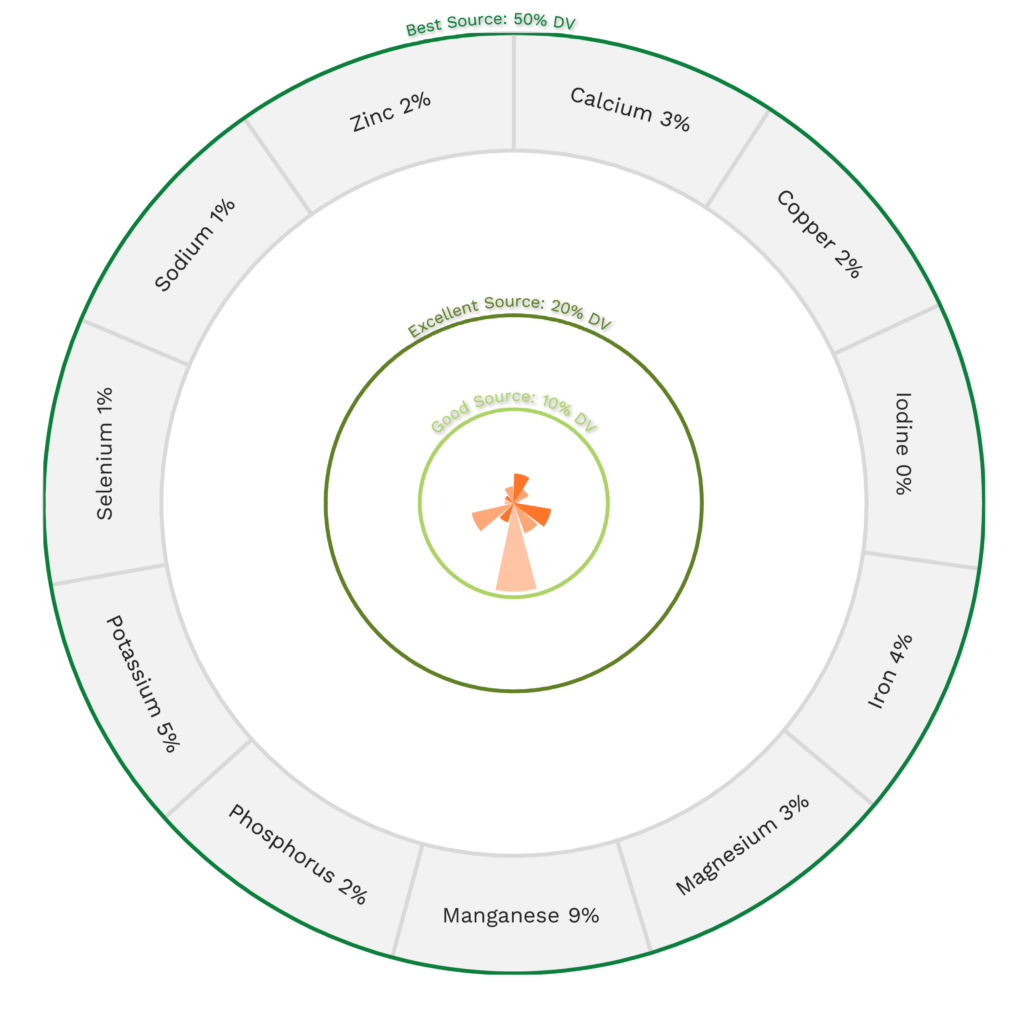

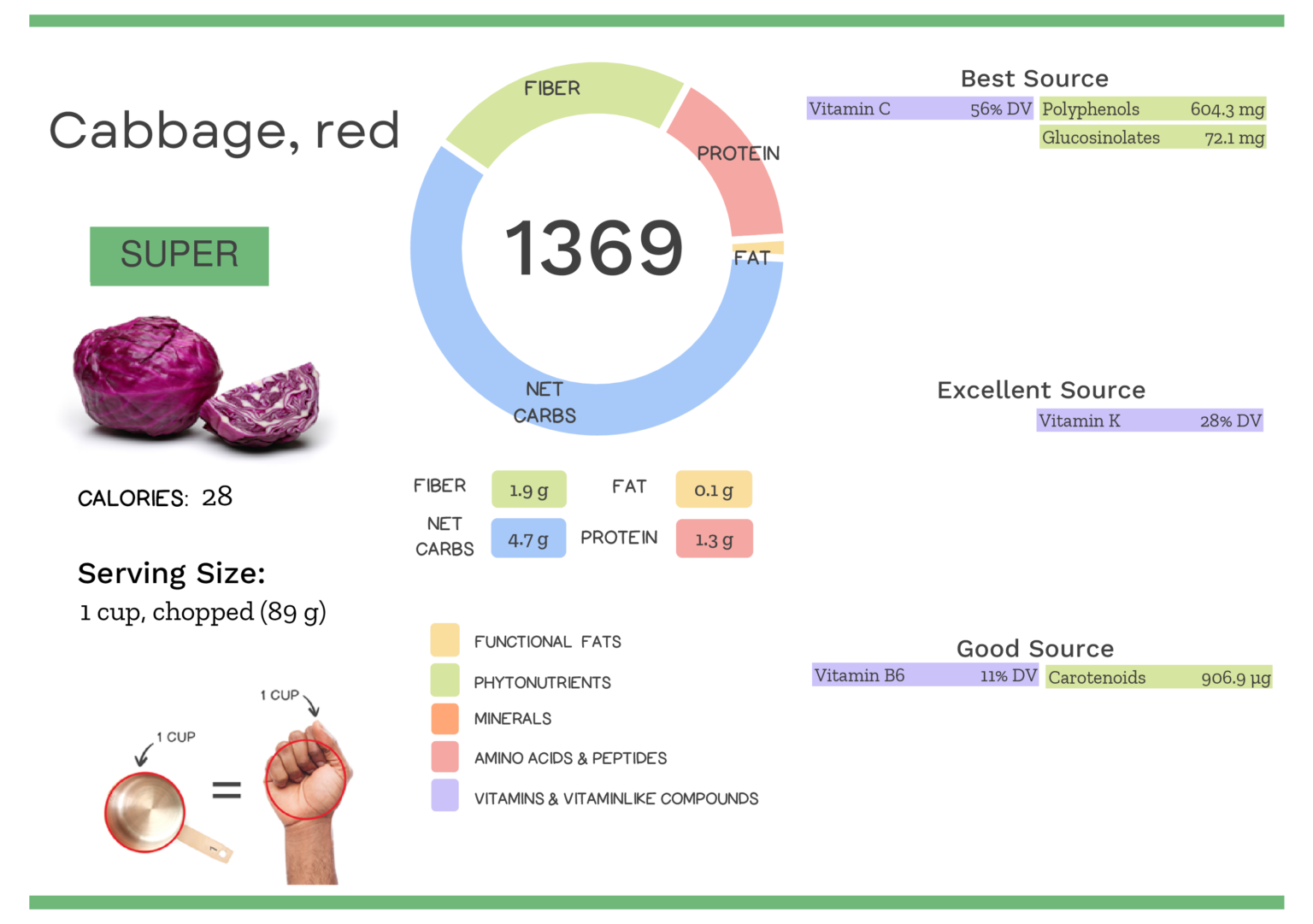
Red Cabbage Nutrition Varies With Cooking
The Nutrivore Score of red cabbage varies depending on the method of preparation.
| NUTRIVORE SCORE | |
|---|---|
| Red cabbage, cooked, boiled, drained, with salt | 1240 |
| Red cabbage, cooked, boiled, drained, without salt | 1330 |
| Red cabbage, raw | 1369 |
The Best Support to Build This Important Daily Habit!
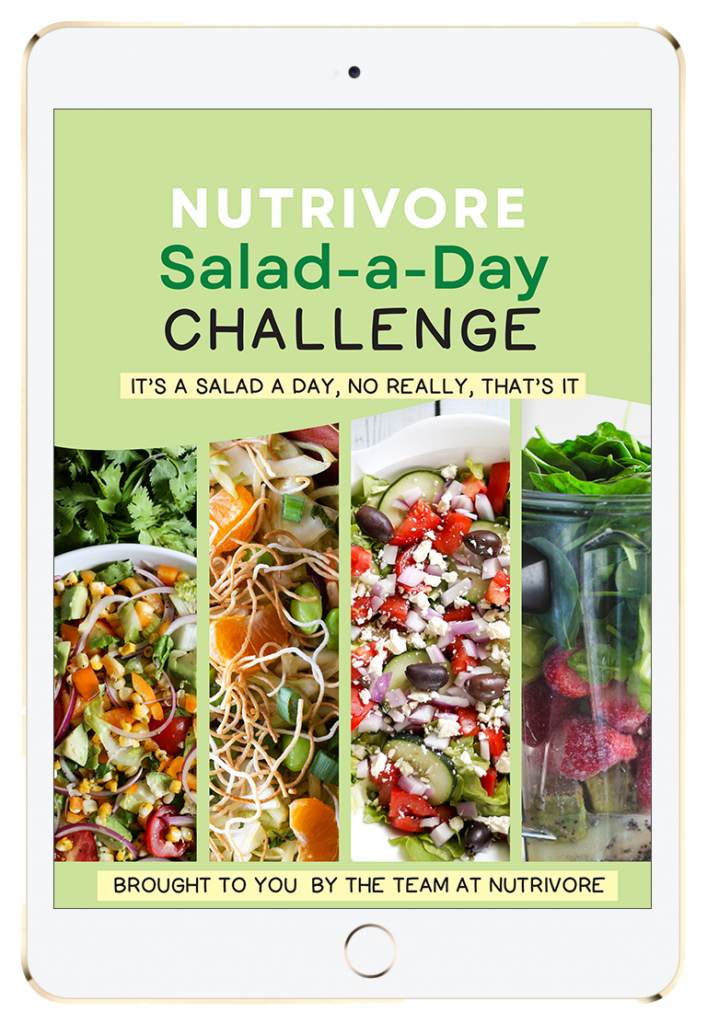
Nutrivore Salad-a-Day Challenge
The Nutrivore Salad-a-Day Challenge e-book explains all the ways a daily salad can improve your health, plus includes a collection of 10 handy visual guides and food lists, like the Nutrivore Salad Matrix.
Plus, you’ll find 50+ recipes, including over 30 of our favorite salad recipes plus recipes for delicious dressings and tasty toppers.
Buy now for instant digital access.
Cabbage Nutrition Varies With Fermentation
Despite having lower Nutrivore Scores, fermented cabbage is amazing for our gut, providing unique health benefits. Let’s just say it’s a “probiotic super-food”.
| NUTRIVORE SCORE | |
|---|---|
| Kimchi | 1097 |
| Sauerkraut | 710 |
| Red cabbage, raw | 1369 |
Cabbage Nutrition Varies With Variety
There are over 400 different varieties of cabbage grown throughout the world, ranging in color, shape, leaf texture, flavor, and nutrient profile, which means their Nutrivore Scores vary too. To maximize all the benefits cabbage has to offer, try incorporating different types into your diet.
| NUTRIVORE SCORE | |
|---|---|
| Bok choy, raw | 3428 |
| Green cabbage, raw | 2034 |
| Red cabbage, raw | 1369 |
| Savoy cabbage, raw | 1321 |
Impressed the nutrition in cabbage is a “head” above the rest? Maybe your friends will be too!
Health Benefits of Red Cabbage Nutrients
Let’s take a closer look at all of the best and excellent source of nutrients found in a 1-cup serving of red cabbage and see how they benefit our health.
Red Cabbage Provides 72.1 mg of Glucosinolates
Red cabbage is an outstanding source of glucosinolates, providing 72.1 mg of glucosinolates per 1-cup serving!
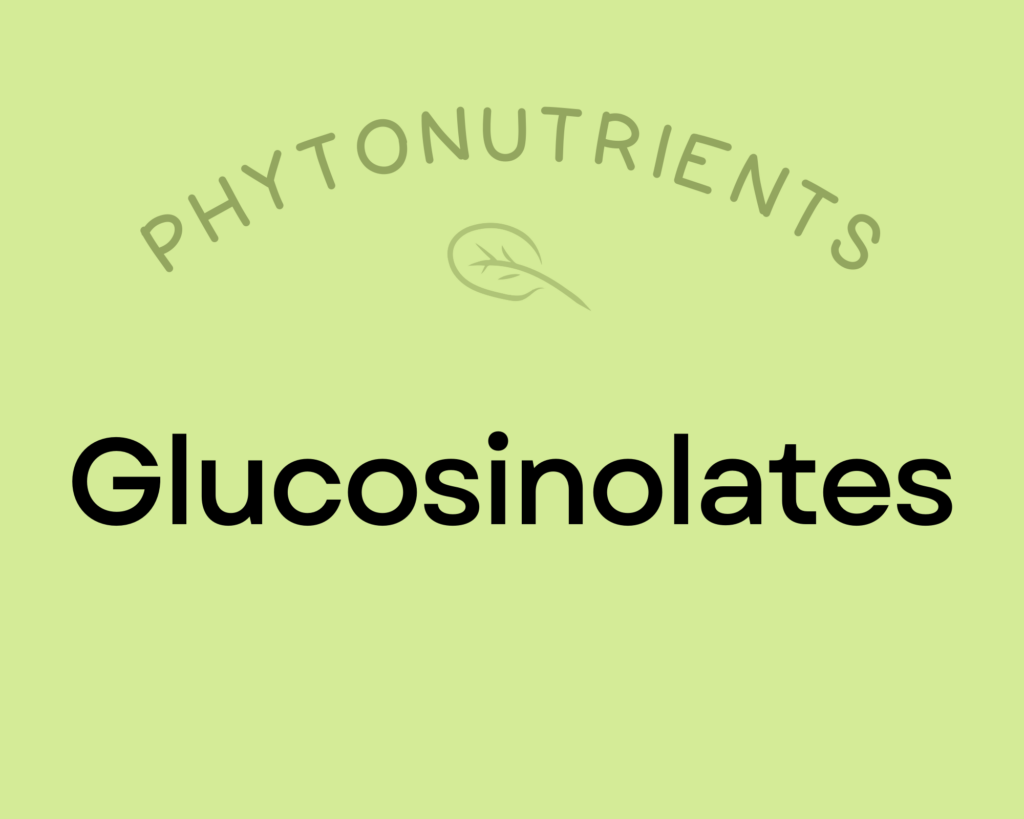
Glucosinolates are well-studied sulfur-containing compounds which break down into bioactive isothiocyanates and indoles when vegetables are damaged (via chewing, cutting, or other processing).
Isothiocyanates (like sulforaphane) are absolute rock stars as far as human health is concerned! Research spanning human epidemiology, animal models, and in vitro experiments show that dietary isothiocyanates are inversely associated with bladder cancer, lung cancer, colon cancer, breast cancer, and pancreatic cancer; some evidence also suggests they may be able to improve ventricular function following heart attacks.
Indoles also have powerful cancer prevention benefits through multiple mechanisms that include modulation of phases I and II detoxification enzymes, regulation of cell cycle arrest, control of cell growth, induction of apoptosis, antioxidant activity, anti-angiogenic effects, and epigenetic regulation. Indole-3-carbinol breaks down into 3,3′-Diindolylmethane (DIM), which is known for its anti-inflammatory, immune system modulating, cancer prevention and estrogen metabolism benefits.
Learn more about glucosinolates here.
Red Cabbage Provides 604.3 mg of Polyphenols
Red cabbage is an incredible source of polyphenols, providing 604.3 mg of polyphenols per 1-cup serving!
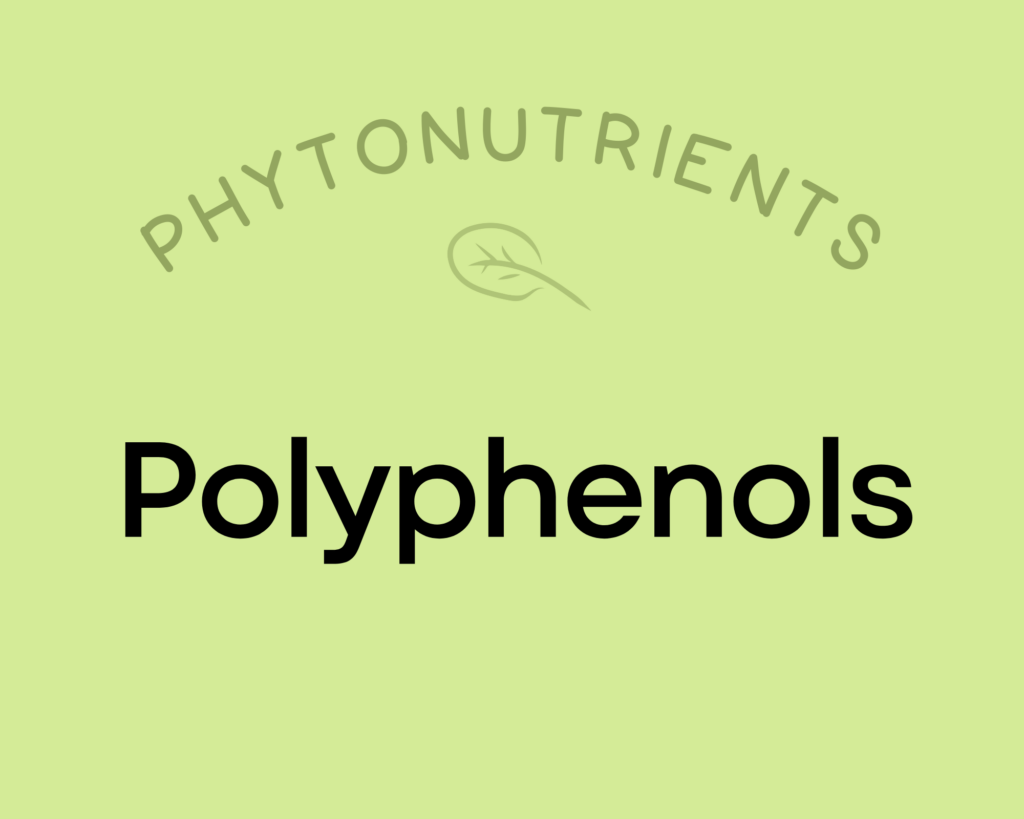
Polyphenols play a huge role in protecting against cancer, heart disease, diabetes, asthma, osteoporosis, neurodegenerative diseases, and other conditions associated with oxidative stress. In fact, a major reason foods like red wine and olive oil (as well as diets rich in both, such as the Mediterranean diet) show up as so beneficial may be due to their high polyphenol content! Along with chronic diseases, supplementing with polyphenols has been shown to protect against infections and reduce the signs of aging. Polyphenols exert their most potent effects by acting as antioxidants—preventing cellular damage by neutralizing hazardous oxygen radicals and improving cellular health as a result (which, in turn, benefits virtually every system in the body). As a result of their antioxidant properties, polyphenols also boost the immune system and protect against both chronic and acute diseases. In addition, polyphenols can help regulate enzyme function, stimulate cell receptors, modulate the functions of inflammatory cells (including T and B lymphocytes, macrophages, platelets, and natural killer cells), alter adhesion molecule expression, affect nerve cells and cardiac muscle cells, and exert antiviral effects. Learn more about polyphenols here.
Red Cabbage Provides 56% DV Vitamin C
Red cabbage is a fantastic source of vitamin C, providing 56% of the daily value per 1-cup serving!
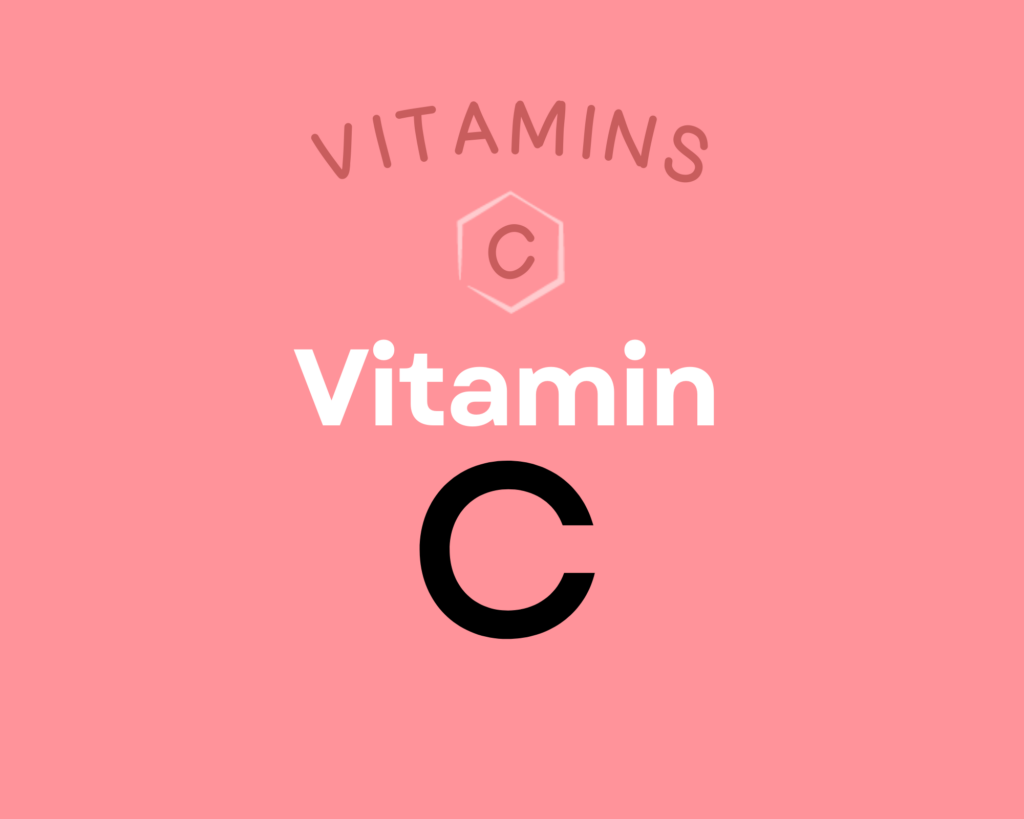
Vitamin C is a water-soluble vitamin that has powerful antioxidant properties (meaning it can help combat oxidative damage from free radicals and reactive oxygen species) and that serves as an enzyme cofactor (meaning it’s needed for enzymes to do their job, for example vitamin C is necessary for collagen synthesis, which is essential for bones, joints, teeth, blood vessels, skin and eyes) and playing important roles in immune system and skin health. Higher intakes of vitamin C are linked to reduced risk of heart disease, some forms of cancer, type 2 diabetes, cataracts, age-related macular degeneration, and gout. Vitamin C can also help regulate the stress response and reduce anxiety, and there’s preliminary evidence that it may also help prevent Alzheimer’s disease. Learn more about vitamin C here.
Red Cabbage Provides 28% DV Vitamin K
Red cabbage is an excellent source of vitamin K, providing 28% of the daily value per 1-cup serving!
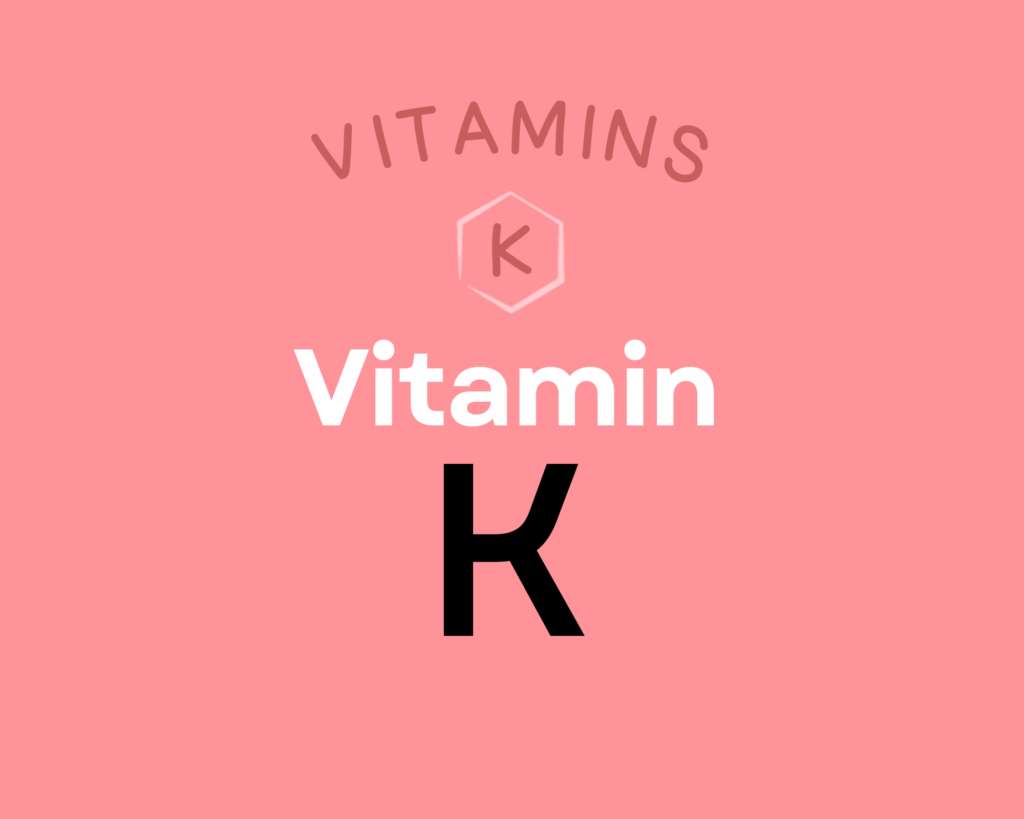
Vitamin K is actually a group of fat-soluble vitamins with a similar molecular structure, existing as K1, multiple isoforms of K2, and the synthetic form K3. This nutrient plays a vital role in coagulation, due to serving as a cofactor for proteins needed for blood clotting; it’s also essential for bone metabolism, cellular function, and the prevention of soft tissue calcification. Getting enough vitamin K2 can help protect against cardiovascular disease, may improve bone mineral density and skeletal health, and may even support endocrine function and brain health; there’s also some limited evidence it has anti-cancer and anti-inflammatory properties. Learn more about vitamin K here.
Want to know the top 500 most nutrient-dense foods?
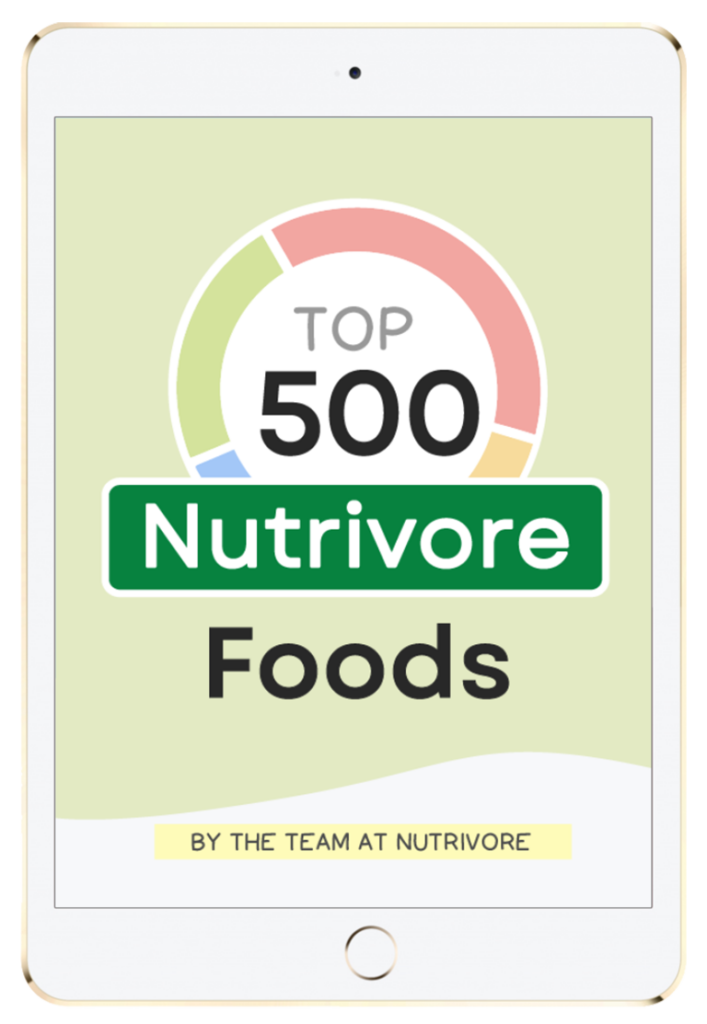
Top 500 Nutrivore Foods
The Top 500 Nutrivore Foods e-book is an amazing reference deck of the top 500 most nutrient-dense foods according to their Nutrivore Score. Think of it as the go-to resource for a super-nerd, to learn more and better understand which foods stand out, and why!
If you are looking for a quick-reference guide to help enhance your diet with nutrients, and dive into the details of your favorite foods, this book is your one-stop-shop!
Buy now for instant digital access.
How Much Red Cabbage Should We Eat Per Day?
Cabbage is about as affordable and versatile as it gets for a veggie – it’s harder to get better bang for your buck!
Every serving of fresh, whole vegetables or fruit we eat daily reduces the risk of all-cause mortality by 5% to 8%, with the greatest risk reduction seen when we consume five or more servings per day. In fact, consuming 800 grams of vegetables and fruits daily reduces all-cause mortality by 31% compared to eating less than 40 grams daily. A 2017 meta-analysis showed that 2.24 million deaths from cardiovascular disease, 660,000 deaths from cancer, and 7.8 million deaths from all causes could be avoided globally each year if everyone consumed 800 grams of veggies and fruits every day.
Eating vegetables and fruit in abundance lowers risk of cancer, cardiovascular disease, type 2 diabetes, obesity, chronic kidney disease, osteoporosis and bone fragility fractures (including hip fracture), cognitive impairment and dementia (including Alzheimer’s disease), neurodegenerative diseases, asthma, allergies, chronic obstructive pulmonary disease, age-related macular degeneration, cataracts, glaucoma, depression, ulcerative colitis and Crohn’s disease, rheumatoid arthritis, inflammatory polyarthritis, non-alcoholic fatty liver disease, acne, seborrheic dermatitis, and lowers markers of inflammation. Learn more in Importance of Vegetables and Fruit.
Covering half of your plate with a variety of vegetables (and three quarters of your plate if your starchy food is a root vegetable or winter squash) at each meal is a simple way to easily achieve the goal of 5 or more servings of vegetables daily.
Studies show that, for every 100 grams of cruciferous veggies (like red cabbage), we eat daily, all-cause mortality decreases by 24%!
Just remember, it’s always best to mix up the veggies you eat day to day (aiming for a wide variety of different vegetables and fruits throughout the week), and red cabbage definitely has a place at the table.
Easily track your servings of Nutrivore Foundational Foods!

The Nutrivore Weekly Serving Matrix
The Nutrivore Weekly Serving Matrix digital resource is an easy-to-use and flexible weekly checklist designed to help you maximize nutrient-density and meet serving suggestions of Nutrivore foundational foods, all without having to weigh or measure your foods!
Includes a 22-page instructional guide and downloadable interactive guides.
Buy now for instant digital access.
cITATIONS
Expand to see all scientific references for this article.
Clements RS Jr, Darnell B. Myo-inositol content of common foods: development of a high-myo-inositol diet. Am J Clin Nutr. 1980 Sep;33(9):1954-67. doi: 10.1093/ajcn/33.9.1954. PMID: 7416064.
Phenol-Explorer: Common cabbage [Red], raw
Piironen V, Toivo J, Puupponen-Pimia R, Lamp AM. Plant sterols in vegetables, fruits and berries. Journal of the Science of Food and Agriculture. 2003. Vol 83(4):330-337. doi:10.1002/jsfa.1316
Possenti, M, Baima S, Raffo A, Durazzo A, Giusti AM, Natella F. Glucosinolates in Food. Glucosinolates. 2016. 1-46. doi: 10.1007/978-3-319-26479-0_4-1.
Pravst I, Zmitek K, Zmitek J. Coenzyme Q10 contents in foods and fortification strategies. Crit Rev Food Sci Nutr. 2010 Apr;50(4):269-80. doi: 10.1080/10408390902773037. PMID: 20301015.
USDA Food Central Database: Cabbage, red, raw
Watanabe T, Kioka M, Fukushima A, Morimoto M, Sawamura H. Biotin content table of select foods and biotin intake in Japanese. Int J Anal Bio-Sci. 2014. Vol 2(4):109-125.


